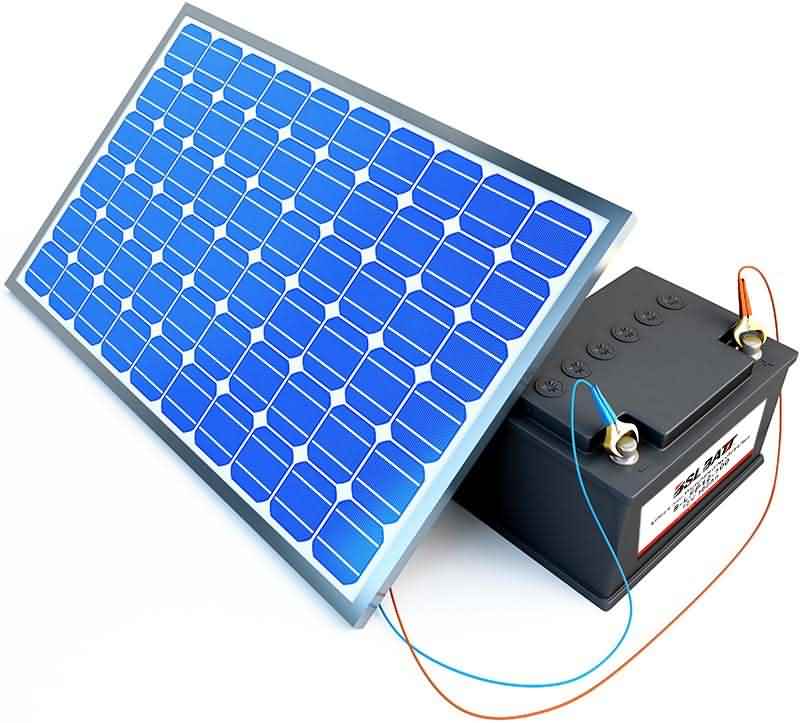Industry Application
Product Type
【Wonderful 】I’ve Tried BSLBATT LiFePO4 Charging And I’m Even Surprised By What Happens Next
| The full name of lithium iron phosphate battery is lithium iron phosphate ion battery, referred to as lithium iron phosphate battery. Since its performance is particularly suitable for the application of power, the word “power” was added in the name, namely lithium iron phosphate power battery. It is also called “lithium iron (LiFe) power battery”.
1. Conventional charging During the conventional lithium ion charging process, a conventional Li-ion Battery containing lithium iron phosphate (LiFePO4) needs two steps to be fully charged: step 1 uses constant current (CC) to reach about 60% State of Charge (SOC); step 2 takes place when charge voltage reaches 3.65V per cell, which is the upper limit of effective charging voltage. Turning from constant current (CC) to constant voltage (CV) means that the charge current is limited by what the battery will accept at that voltage, so the charging current tapers down asymptotically, just as a capacitor charged through a resistor will reach the final voltage asymptotically. To put a clock to the process, step 1 (60%SOC) needs about one hour and the step 2 (40%SOC) needs another two hours. 1. Fast “forced” charging: Because an overvoltage can be applied to the LiFePO4 battery without decomposing the electrolyte, It can be charged by only one step of CC to reach 95%SOC or be charged by CC+CV to get 100%SOC. This is similar to the way lead acid batteries are safely force charged. The minimum total charging time will be about two hours. 2. Large overcharge tolerance and safer performance A LiCoO2 battery has a very narrow overcharge tolerance, about 0.1V over the 4.2V per cell charging voltage plateau, which also the upper limit of the charge voltage. Continuous charging over 4.3V would either damage the battery performance, such as cycle life, or result in fire or explosion. A LiFePO4 battery has a much wider overcharge tolerance of about 0.7V from its charging voltage plateau of 3.5V per cell. When measured with a differential scanning calorimeter (DSC) the exothermic heat of the chemical reaction with electrolyte after overcharge is only 90 Joules/gram for LiFePO4 versus 1600 J/g for LiCoO2 . The greater the exothermic heat, the more vigorous the fire or explosion that can happen when the battery is abused. A LiFePO4 battery can be safely overcharged to 4.2 volts per cell, but higher voltages will start to break down the organic electrolytes. Nevertheless, it is common to charge a 12 volt a 4-cell series pack with a lead acid battery charger. The maximum voltage of these chargers, whether AC powered, or using a car’s alternator, is 14.4 volts. This works fine, but lead acid chargers will lower their voltage to 13.8 volts for the float charge, and so will usually terminate before the LiFe pack is at 100%. For this reason a special LiFe charger is required to reliably get to 100% capacity. Due to the added safety factor, these packs are preferred for large capacity and high power applications. From the viewpoint of large overcharge tolerance and safety performance, a LiFePO4 battery is similar to a lead-acid battery. 3. Self balance Unlike the lead-acid battery, a number of LiFePO4 cells in a battery pack in series connection cannot balance each other during charging process. This is because the charge current stops flowing when the cell is full. This is why the LiFEPO4 packs need management boards. 4. Four times higher energy density than Lead-acid battery Lead-acid battery is an aqueous system. The single cell voltage is nominally 2V during discharge. Lead is a heavy metal, its specific capacity is only 44Ah/kg. In comparison, the lithium iron phosphate (LiFePO4) cell is a non-aqueous system, having 3.2V as its nominal voltage during discharge. Its specific capacity is more than 145Ah/kg. Therefore, the gravimetric energy density of LiFePO4 battery is 130Wh/kg, four times higher than that of Lead-acid battery, 35Wh/kg. 5. Simplified battery management system and battery charger Large overcharge tolerance and self-balance characteristic of LiFePO4 battery can simplify the battery protection and balance circuit boards, lowering their cost. The one step charging process allows the use of a simpler conventional power supplier to charge LiFePO4 battery instead of using an expensive professional Li-ion battery charger. 6. Longer cycle life In comparison with LiCoO2 battery which has a cycle life of 400 cycles, LiFePO4 battery extends its cycle life up to 2000 cycles. 7. High temperature performance It is detrimental to have a LiCoO2 battery working at elevated temperature, Such as 60°C. However, a LiFePO4 battery runs better at elevated temperature, offering 10% more capacity, due to higher lithium ionic conductivity. This is the best way to charge BSLBATT Lithium-ion battery. The chargers embeds some dedicated charge algorithm with precise charge voltage. It also manage efficiently charge floating voltage and duration in order to maximize battery life span.It changes the way you do things |
A Guide to Choosing the Best 48V Lithium Golf Cart Battery
Would it be worth investing in a 48V ...
10 Exciting Ways To Use Your 12V Lithium Batteries
Back in 2016 when BSLBATT first began designing what would become the first drop-in replacemen...
BSLBATT Battery Company Receives Bulk Orders from North American Customers
BSLBATT®, a China Forklift battery manufacturer specializing in the material handling indust...
Fun Find Friday: BSLBATT Battery is coming to another great LogiMAT 2022
MEET US! VETTER’S EXHIBITION YEAR 2022! LogiMAT in Stuttgart: SMART – SUSTAINABLE – SAF...
Looking for new Distributors and Dealers for BSL Lithium Batteries
BSLBATT battery is a fast-paced, high-growth (200% YoY ) hi-tech company that is leading the a...
BSLBATT to Participate at MODEX 2022 on March 28-31 in Atlanta, GA
BSLBATT is one of the largest developers, manufacturers, and integrators of lithium-ion batter...
What makes the BSLBATT the Superior Lithium Battery for your Motive Power needs?
Electric forklift and Floor Cleaning Machines owners who seek the ultimate performance will fi...






























